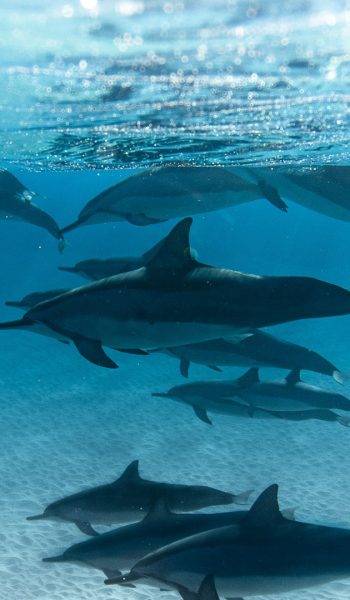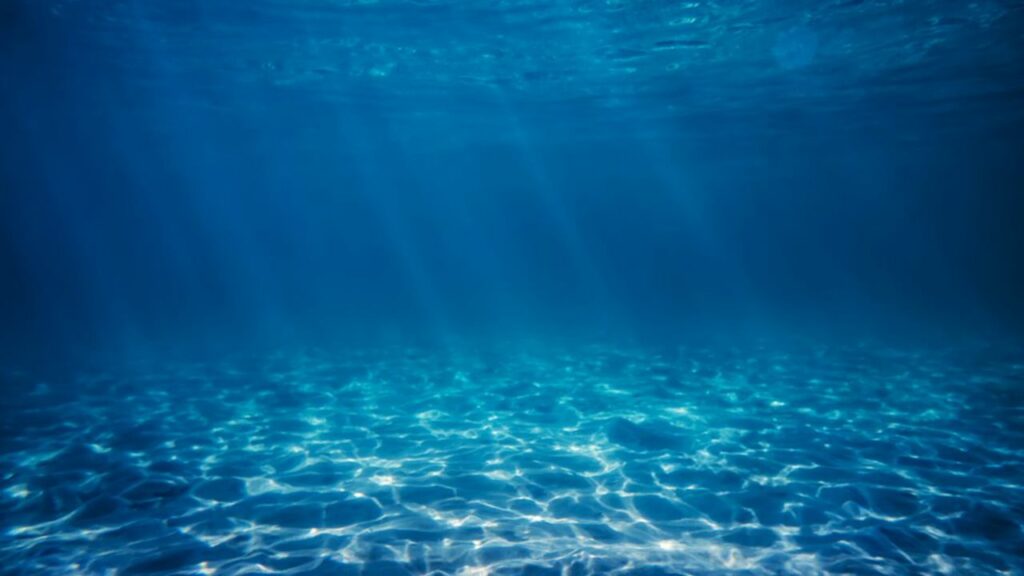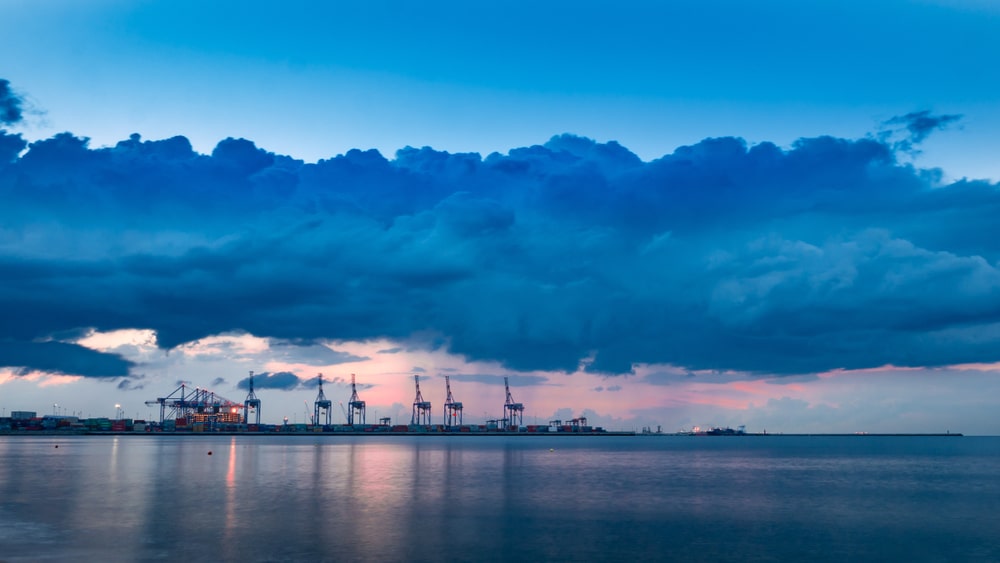All countries across the world are accelerating their energy transition in the context of the fight against climate change. In this regard, they are actively exploring alternative solutions for electricity generation. Oceans are considered as a green, sustainable, renewable source of energy for personal, professional, and industrial purposes. Let’s figure out what are the main marine energy resources, as well as their use, benefits, and limitations.
Your environmental monitoring at your fingertips!
Optimize your environmental monitoring, become smarter and more sustainable with a unified system that gathers all your environmental sensors & data in one place.

What are the ocean energy resources and how do they work?

Oceans are one of the world’s largest renewable energy resources, along with sun, wind, falling water, the heat of the earth (geothermal), and plant materials (biomass). Marine energy is obtained from harnessing the ocean’s physical and chemical state. Despite huge potential, hydrokinetic energy is considered yet untapped. As a reminder, more than 70% of our planet’s surface is covered by water.
Here are the main ocean marine energy resources:
- the perpetual natural movement of waves;
- the surface and underwater currents;
- the tides: tidal stream and range;
- the water temperature difference between the surface and deeper sections, next to the seafloor (minimum 20° Celsius);
- the water salinity.
Various processes and devices are used to generate clean energy from the above marine resources:
- Specific buoys gather the energy produced by the ocean’s vertical and horizontal motion, which is converted into electricity.
- Turbines placed in tidal streams harvest the mechanical energy from the fast-flowing body of water generated by tides and transform it into electricity.
- Ocean Thermal Energy Conversion (OTEC) consists of using the temperature difference to power hydro turbines that generate electricity.
- When fresh water from a river is mixed with salt water (for example at a point where the river flows into the ocean), the difference in salt concentration can be used to generate a form of energy called “salinity gradient power”.
What are the benefits of using marine energy resources?
Marine energy provides a wide variety of opportunities to professional stakeholders and communities that are intended to use this essential power source.
- It is completely pollution-free energy, only using the ocean’s movement to produce electricity without emitting greenhouse gas as fossil fuels do.
- It is renewable since the waves’ motion is endless. Even if the amount of energy produced may vary from season to season and from year to year, it can be harnessed continuously, enabling continuous production.
- It is abundant in all countries that have miles of sea coastline. It powers microgrids for remote coastal or island areas to respond to their homes and business needs.
- It is easily predictable because scientists now have a good knowledge of the cyclical nature of waves, tides, and currents. The amount of electricity that can be obtained can be calculated with a high level of accuracy.
- It is reliable and resilient, thanks to short transmission lines, because of the plant’s nearness to the places where the electricity produced is used.
- It creates green jobs for the local population in a diverse set of jobs: research, engineering, environmental protection…
- It drives innovations in the maritime sector, contributing to the development of the blue economy, which is worth multi-trillion-dollar, with a growth rate twice higher than the rest of the global economy.
- It avoids causing massive damage to land, not only because plants can be deployed offshore, where the energy potential of the waves is higher, but because energy extraction does not leave large holes.
- It has a tremendous power density: as per the experts, it can go up to 30 kW to 40 kW per meter of a wave along the shore and reach approximately 100 kW in the deeper ocean.
- A single wave energy plant can bring electricity to lots of people living in big cities and harbors built on the coastline.
Therefore, marine energy effectively completes other renewable energy sources, such as solar energy and wind energy, to reach clean energy objectives. And above all, it reduces the countries’ dependency on foreign fossil fuels and contributes to curbing air pollution.
What are the main barriers to the more extensive use of marine energy resources?
But now, only a small part of marine energy resources potential is captured. And unfortunately, not the entire global population can benefit from it.

Geographical situation
Main restrictions arise from the geographical situation. First, landlocked countries and cities that do not have direct access to seas and oceans cannot use marine energy as a power source.
Furthermore, the production of electricity from wave energy requires very strong sea waves. This means that only sites with sufficiently important tidal ranges, wavelength, wave velocity, and water density can be exploited. And since tidal energy may considerably vary depending on the relative positioning of the earth, the moon, and the exposure to wind and sun, the number of suitable sites with a consistent flow of powerful waves is limited.
Pollution
Capturing energy from the waves and tides requires the installation of offshore or onshore power plants. The functioning of imposing machines creates noise that might disturb private and commercial (cargo, cruise) ships sailing in the area, as also marine wildlife, and the ecosystem. Some creatures may also find their natural habitat changed by disturbances caused to the seabed.
Besides, seeing such structures in the middle of the ocean or by the coastline affects the beauty of the landscape. Not only may this visual pollution be unpleasant for people living in coastal regions, but it might have consequences on local tourism.
Companies from this industry could be greatly interested in Sinay’s IA-based solutions to monitor underwater noise pollution and evaluate their environmental footprint. In the “Environmental modules” category, these tools gather information transmitted in real-time by strategically placed sensors. Comparison of the collected data with some key indicators supports a more effective decision-making process and helps to adjust the projects accordingly.
Production costs
Because it is quite recent, colossal investments are needed to acquire the machinery that composes the huge setup used to harness this energy, especially offshore power plants. Apart from the power mill equipment and day-to-day operation, the maintenance is very expensive because of newly discovered technology, and heavy reparation costs when strong severely damage the machines.
However, once the ocean energy industry booms lead by increasing demand, costs should be normalized. This would increase its use, hence helping to expand the market and allowing extra lowering of expenses. A virtuous cycle will therefore be put in place.
Where in the world are the marine energy resources mostly used?
According to the IRENA (International Renewable Energy Agency), marine and other niche technologies’ contributions to the world’s energy mix will reach approximately 4% by 2050, which is equivalent to 881 gigawatts.
Some countries have abundant opportunities to take advantage of ocean energy. For example, in the United States, the total available marine energy resources represent about 57% of the national power quantity generated during the year 2019. And they are considered a way to achieve the US goals of using 100% green electricity by 2035 and getting to net-zero emissions by 2050. The US Department of Energy’s Waterpower Technologies Office identifies a couple of major projects developed in the states of California (San Diego), Oregon (Coos Bay or Reedsport), Washington, New Jersey (Atlantic City), as well as the Pacific and Caribbean territories such as Hawaii.
In Europe, a target was set to incorporate 20% wave energy in the continent’s total consumption of power. The main sites are in Denmark, Italy, Portugal, Spain, and the United Kingdom.
In the rest of the world, several potential sites for capturing wave energy have been identified along the coastal regions of Australia, Canada, Chile, China, Japan, Korea, and New Zealand.
What is the future for marine energy?
Despite these limitations and drawbacks, this emerging form of energy is likely to have a very bright future. If fully harnessed, it is expected to play a vital role over the next few decades, contributing to responding to the world’s energy needs while cutting global carbon emissions.
That is why researchers continue to test and deploy new sustainable technologies to unlock the power of one of the most promising energy sources for a green future. Then, it will be up to each country to consider the positive and negative sides of marine energy and decide whether to adopt it or not.
Frequently Asked Questions About Marine Energy Resources
The main marine energy resources are:
- Waves movements
- Currents
- Tides
- Temperature
- Salinity
The United States is using the most renewable energy resources. The total available marine energy resources represent about 57% of the national power quantity (generated in 2019).
Renewable energies are energies derived from natural sources.
The following source of energy are renewables:
- Solar
- Wind
- Geothermal
- Hydropower
- Ocean
- Bioenergy
Different things made extensive use of marine energy resources difficult and sometimes impossible:
- Geographical situation
- Pollution
- Production costs
Focus on data to make effective decisions
Discover our modules
Environmental Monitoring
Monitor air quality in real-time, be alerted when a threshold is reached & easily comply with regulation thanks to the automated reports.
Monitor water quality in real-time, predict and avoid water pollution & comply with regulations thanks to the automated reports.
Deliver a preliminary metocean analysis and the associated report in jut a few minutes.
You may also be interested by those others environment application :





